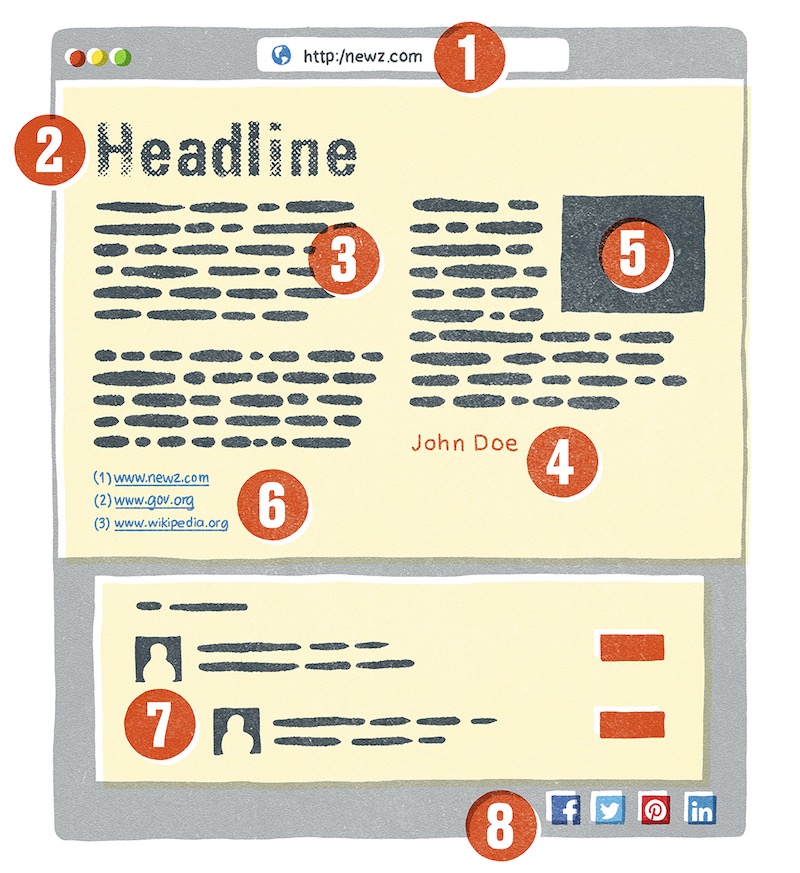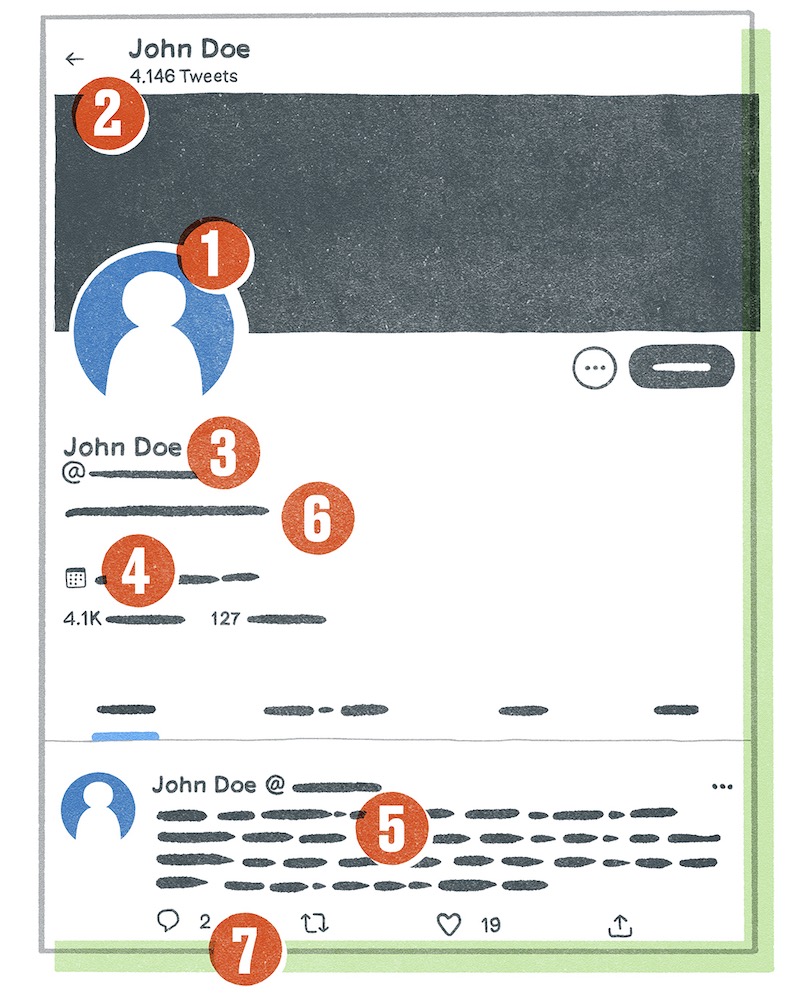Get the tools!
Antagonistic foreign powers can use disinformation, misleading information and propaganda to harm Sweden. Get the tools to build up your resilience.

You are a part of Sweden’s psychological defence. If you are able recognise and deal with disinformation, misleading information, and propaganda, it will make it harder for antagonistic foreign powers to cause division. This in turn helps protect Sweden and its national interests. The harder it is to fool you, the stronger our open, democratic society becomes.
1. Watch out
Watch out for information, images, or other material that you find upsetting or frightening, or that stir up strong feelings. Antagonistic foreign powers frequently play on your emotions to manipulate you.
There are a lot of different methods that can be used to create and spread disinformation, misleading information, and propaganda. Multiple methods are often used simultaneously to achieve greater impact.
One standard method involves creating stories, or narratives, which can be completely false or only partially true, but which are skewed and taken out of context in order to mislead, polarise, and divide. A narrative is designed to influence our perceptions of the world we live in and how we choose to act in different situations.
Another common method involves targeting specific groups of people. This is known as targeted disinformation. A malicious third party, often referred to as an external threat actor, will tailor information to a particular group and then work methodically to reach out specifically to them – and only them – through social media or other channels.
Be on the lookout for the following characteristics of disinformation, misleading information, and propaganda:
- it is misleading and often has a hidden agenda,
- it targets our vulnerabilities, and
- it is intended to disrupt and manipulate public discourse and to break down trust in our society.
2. Think twice
Avoid becoming a part of the spread of disinformation, misleading information, and propaganda. Think twice before you share information with friends or on social media.
Antagonistic foreign powers can use recurring stories (narratives) about Sweden. They want all of us living in Sweden to worry more, to be brought into conflict with one another, and to feel that Sweden is a bad country to live in. A polarised society is more vulnerable, making it easier for anyone who wants to harm us to achieve their goals.
Who are they targeting?
Antagonistic foreign powers can tailor their communication activities and then target specific parts of the population. If you see something and think, ”There’s something to that,” it might be because you are part of the target group – which is why it is essential to think twice.
Images and videos that evoke strong emotions
Images are a particularly compelling way to mislead someone. The rapid rise of artificial intelligence (AI) means that manipulated images, videos, and voice recordings have become more realistic. These images can spread very rapidly when something happens.
Authentic images and videos from an event can also be used but out of context. Even basic recordings on a mobile phone can be used to influence people. The spread of disinformation, misleading information, and propaganda increases when a significant event occurs or when something big happens that is reported in the news.
3. Check the source
Learn how digital platforms work and how to evaluate the validity of information. In a time when algorithms control much our feeds, it is easy to get drawn into a specific narrative – but remember to take a step back and double-check the information.
Social media is built on algorithms. These algorithms can manipulate us on a massive scale, and they control much of what we are exposed to in our feeds. They are designed to build engagement, which can be used to spread both positive and negative messages. This means that you need to be aware of how you react when you see something that makes you exhilarated, sad, or angry. Equally important is to double-check your sources, to search for information in several different locations, and to not share unverified information.
Questions you can ask yourself when you receive new information:
- Is the information accurate? Is it reasonable? Can I double-check it through other sources?
- Where does the information come from? Is this normally a credible source?
- How old is the information? Is it new or a re-use of old data?
- Why is this information being sent out right now? Who benefits from you reacting to it in a particular way?

1. URL
Imitating well-known platforms is a common tactic. Take a closer look at the website address (also known as the URL), to check that it is correct.
2. Headline
The goal is to raise interest and trigger a response from the reader. Always read more than just the headline, and make sure that any claims are backed up by the content.
3. Content
Is it opinion or fact? Read the entire text before you share it or pass the information on.
4. Author(s)
Think about who has written the text, and why. Be on the lookout for texts or websites with no author.
5. Images
Manipulating images is easy, and you cannot be sure that the image has a genuine connection to the content. Do an image search to find out whether the image has been used previously in a different context.
6. Sources
If the text makes references to other sources, check them.
7. Comments
Who is commenting? Most of the time it is ordinary people, but troll accounts and bots are not uncommon.
8. Attention
The fact that a text has a lot of likes or shares does not guarantee that the content is accurate.
A bot (from “robot”) is a computer program that performs automated tasks, such as spreading information on social media. A bot can be used to reinforce certain messages, to spam forums and comments sections, to like or share social media posts, or to carry out cyberattacks. Bots are harder to identify nowadays, as they take on the look and feel of authentic accounts with the help of AI.

1. Profile picture
Bots often use a stolen image or have no profile picture at all. Do an image search to check if it is real. With the onset of generative AI, creating images that look real is easier than ever. When this happens, an image search will not produce any results, and the image is not actually classified as stolen.
2. Activities
Many bots are extremely active. Be on the lookout for accounts with a suspiciously high number of posts per day.
3. Names
Most bots use randomised usernames, such as combinations of scrabbled numbers and letters.
4. Account creation date
Many bot accounts are created immediately before going active. Older accounts are sometimes used, but usually any older posts are removed beforehand, creating a time gap between the creation date and the first post.
5. Languages
Bots sometimes use automatic translation to spread their messages in several languages. This results in obvious grammatical errors or incoherent sentences.
6. Information
Bot accounts often lack personal information or use made-up or fake information.
7. Interactions
Check the posts and other users with whom the account interacts. Bots are often coordinated and reinforce one another while, at the same time, having few followers who are real people.
4. Look for official information
Pay attention to information from the authorities and keep yourself up to date. This is particularly important when something happens that stirs up strong emotions.
Most of us get our information from a personal selection of sources out of pure habit. When something big happens in society, a majority of people want information right now! In those situations, relying only on official and confirmed information is especially important.
In our digital age, disinformation, misleading information, and propaganda is very common. As such, it is important to remember that authorities only communicate official and confirmed information. Your patience may well be running thin before you get confirmed information. In that situation, you must stay calm – that is the best you can do for yourself, and for Sweden.
Remember the four tools we have gone over:
- Watch out
- Think twice
- Check the source
- Look for official information